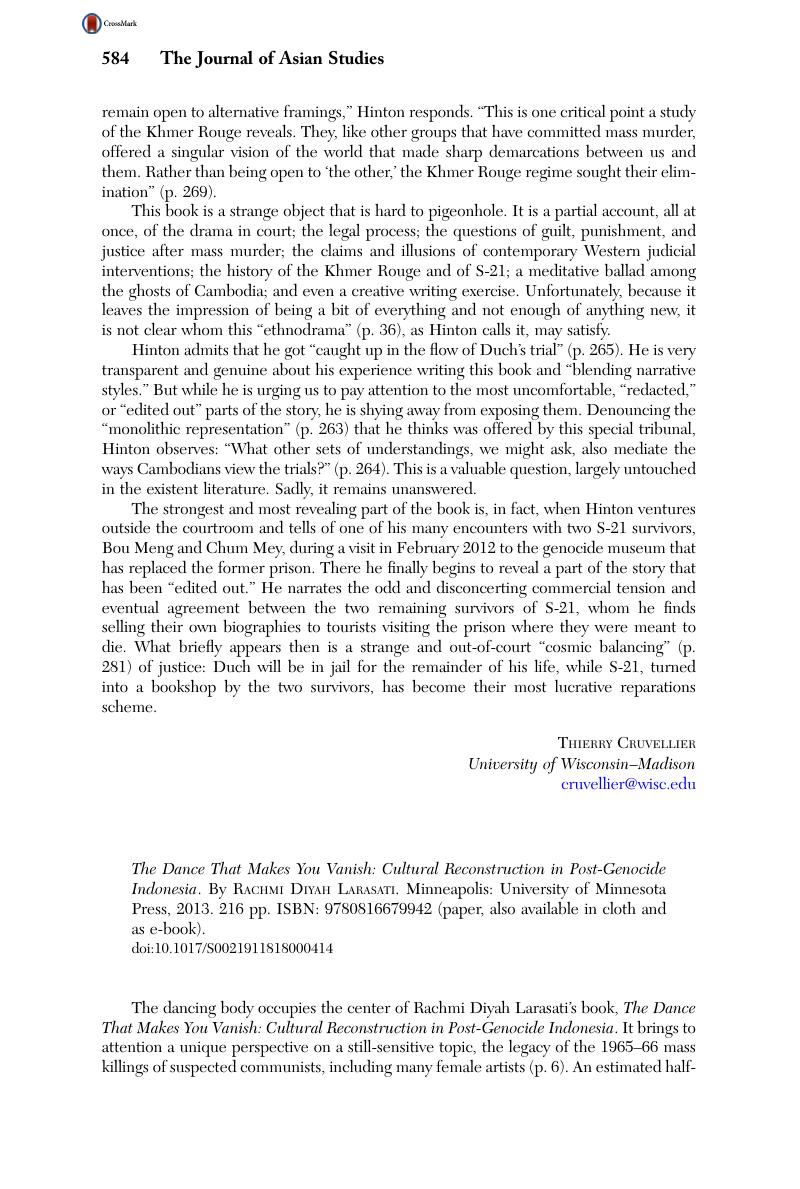No CrossRef data available.
Article contents
The Dance That Makes You Vanish: Cultural Reconstruction in Post-Genocide Indonesia. By Rachmi Diyah Larasati. Minneapolis: University of Minnesota Press, 2013. 216 pp. ISBN: 9780816679942 (paper, also available in cloth and as e-book).
Review products
Published online by Cambridge University Press: 11 May 2018
Abstract

- Type
- Book Reviews—Southeast Asia
- Information
- Copyright
- Copyright © The Association for Asian Studies, Inc. 2018
References
1 Heryanto notes that the estimated nationwide casualties cited in sources generally range from one to two million. Heryanto, Ariel, State Terrorism and Political Identity in Indonesia: Fatally Belonging (London: Routledge, 2006), 2Google Scholar.
2 A debate persists about using the term “genocide” in referring to the 1965–66 violence. Countering general consensus in Indonesia, Larasati cites violence against ethnic Chinese, and possible “genetic” differences of leftists, but also supports Gellately and Kiernan's suggestion to broaden the 1948 UN Convention definition to include “politically motivated mass murders” (pp. 163–64, 186). See Gellately, Robert and Kiernan, Ben, The Specter of Genocide: Mass Murder in Historical Perspective (Cambridge: Cambridge University Press, 2003)CrossRefGoogle Scholar.
3 Pohlman, Annie, Women, Sexual Violence and the Indonesian Killings of 1965–66 (London: Routledge, 2015), 5–6Google Scholar.
4 Larasati describes the village version of Jejer—as contrasted with the subdued, graceful court dance—as a quick-moving dance with darting eyes and circular torso movements (p. 64).
5 Heryanto, State Terrorism and Political Identity, op. cit. note 1, 3.
6 Ibid.
7 Pohlman, Women, Sexual Violence, op. cit. note 3, 3, 4, 7–8, 13, 20.
8 Human Rights Watch, “Indonesia: US Documents Released on 1965–66 Massacres,” October 18, 2017, www.hrw.org/news/2017/10/18/indonesia-us-documents-released-1965-66-massacres (accessed October 18, 2017).


